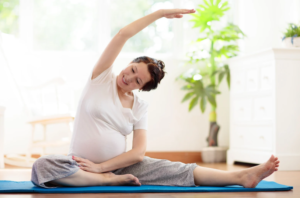
Share this article on social media
Sleep is a vital physiological process that affects the health and well-being of humans. To study the sleep patterns and disorders of people, sleep laboratories use various sensors and accessories to monitor and record the brain waves, eye movements, muscle activity, heart rate, breathing, blood oxygen level, and other parameters during sleep. These sensors and accessories are collectively called polysomnography (PSG) equipment.
Electroencephalogram (EEG) Sensors
Electroencephalogram (EEG) sensors are electrodes that are attached to the scalp of the subject to measure the electrical activity of the brain. EEG sensors can detect different stages of sleep, such as rapid eye movement (REM) sleep and non-rapid eye movement (NREM) sleep, as well as various sleep disorders, such as insomnia, narcolepsy, and sleep apnea. EEG sensors are usually connected to a computer or a recorder that displays and stores the EEG signals.
Electrooculogram (EOG) Sensors
Electrooculogram (EOG) sensors are electrodes that are placed near the eyes of the subject to measure the eye movements during sleep. Eye movements are an important indicator of REM sleep, which is associated with dreaming and memory consolidation. EOG sensors can also detect abnormal eye movements, such as periodic limb movements (PLM), which are involuntary jerks of the legs or arms that occur during sleep and can disrupt the quality of sleep.
Electromyogram (EMG) Sensors
Electromyogram (EMG) sensors are electrodes that are attached to the chin, neck, or limbs of the subject to measure the muscle activity during sleep. Muscle activity can reflect the degree of relaxation or tension of the subject, as well as the presence of REM sleep or NREM sleep. EMG sensors can also detect muscle disorders, such as restless legs syndrome (RLS), which is a condition that causes an irresistible urge to move the legs during sleep.
Electrocardiogram (ECG) Sensors
Electrocardiogram (ECG) sensors are electrodes that are attached to the chest or limbs of the subject to measure the heart rate and rhythm during sleep. Heart rate and rhythm can vary depending on the sleep stage and the emotional state of the subject. ECG sensors can also detect cardiac disorders, such as arrhythmia, which is an irregular or abnormal heartbeat that can affect the blood flow and oxygen delivery to the body.
Respiratory Sensors
Respiratory sensors are devices that are placed on the nose, mouth, chest, or abdomen of the subject to measure the breathing rate and volume during sleep. Breathing rate and volume can change depending on the sleep stage and the respiratory system function of the subject. Respiratory sensors can also detect respiratory disorders, such as obstructive sleep apnea (OSA), which is a condition that causes repeated pauses in breathing during sleep due to a blockage in the upper airway.
Pulse Oximeter Sensors
Pulse oximeter sensors are devices that are clipped to the finger or earlobe of the subject to measure the blood oxygen level during sleep. Blood oxygen level can indicate the oxygen saturation of the blood and the efficiency of gas exchange in the lungs. Pulse oximeter sensors can also detect hypoxemia, which is a condition that causes low blood oxygen level due to inadequate breathing or poor lung function.
Other Accessories
Other accessories that are used in sleep laboratories include belts, wires, tapes, gels, caps, masks, pillows, blankets, and headphones. These accessories are used to secure, connect, apply, cover, support, or comfort the sensors and the subject during the PSG test. Some accessories may also provide additional functions, such as delivering positive airway pressure (PAP) therapy for OSA patients or playing soothing sounds for relaxation purposes.
Conclusion
Sleep (PSG) laboratory sensors and accessories are essential tools for studying and diagnosing sleep patterns and disorders in humans. By using various types of sensors and accessories, sleep laboratories can monitor and record various physiological parameters during sleep and provide valuable information for improving the quality of life and health of people.
Source: https://www.sanaltedavi.net/







